The Skeletal System
The skeletal system is the framework of the body, consisting of bones, cartilage, and joints. It serves several important functions, including providing support and protection for the body's organs, allowing movement, producing blood cells, and storing minerals.
Structure of the Skeletal System
The skeletal system is made up of over 200 bones in the human body. These bones are categorized into two main groups: the axial skeleton, which includes the skull, vertebral column, and rib cage; and the appendicular skeleton, which includes the bones of the upper and lower limbs, shoulder, and pelvic girdle.
Bone Types
There are four main types of bones in the human body:
- Long bones, such as the femur and humerus, which are responsible for supporting the weight of the body and facilitating movement.
- Short bones, like the bones of the wrist and ankle, which provide stability and support for the body.
- Flat bones, including the skull and sternum, which offer protection and provide a broad surface for muscle attachment.
- Irregular bones, such as the vertebrae and facial bones, which have complex shapes and functions.
Function of the Skeletal System
The skeletal system performs several crucial functions:
- Support: It provides a structural framework for the body, supporting soft tissues and internal organs.
- Protection: The skeletal system protects vital organs, such as the brain, heart, and lungs, from injury.
- Movement: Bones, in conjunction with muscles and joints, facilitate movement and locomotion.
- Mineral Storage: Bones store essential minerals, such as calcium and phosphorus, which are released into the bloodstream as needed.
- Blood Cell Production: The bone marrow within certain bones is responsible for producing red and white blood cells.
Common Skeletal System Disorders
Several disorders and conditions can affect the skeletal system, including:
- Osteoporosis: A condition characterized by weakened and brittle bones, often associated with aging.
- Arthritis: Inflammation of the joints, causing pain and restricted movement.
- Scoliosis: Abnormal curvature of the spine, often diagnosed during adolescence.
- Fractures: Breaks in the bone caused by trauma or excessive force.
Study Guide
To effectively study the skeletal system, consider the following tips:
- Memorize the names and locations of major bones in the human body, as well as their functions.
- Understand the structure of different types of bones and their roles in the skeletal system.
- Explore the functions of the skeletal system and how it interacts with other body systems.
- Research common skeletal system disorders and their impact on overall health.
- Utilize diagrams and models to visualize the skeletal system and its components.
◂Science Worksheets and Study Guides Eighth Grade. Stars, Galaxies and the Universe
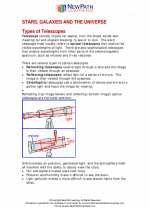
 Worksheet/Answer key
Worksheet/Answer key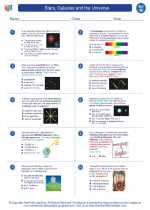
 Worksheet/Answer key
Worksheet/Answer key
 Worksheet/Answer key
Worksheet/Answer key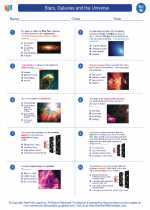
 Vocabulary/Answer key
Vocabulary/Answer key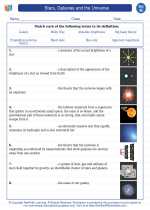
 Vocabulary/Answer key
Vocabulary/Answer key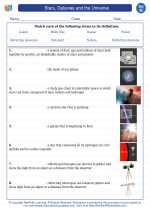
 Vocabulary/Answer key
Vocabulary/Answer key
